
The Vodi is a novel by John Braine, first published in the United Kingdom in 1959 by Eyre & Spottiswoode. A revised version was published in 1978.

The Vodi is a novel by John Braine, first published in the United Kingdom in 1959 by Eyre & Spottiswoode. A revised version was published in 1978.
Dick Corvey is suffering from advanced tuberculosis in a provincial sanitarium. While confined to bed 24 hours a day, he meditates on various events from his earlier life, his friendship with Tom, his relationships with women, especially his brief engagement with Lois who abandoned him when his virtually hopeless condition had become apparent. A recurring theme is that of the Vodi, a malevolent race of small creatures invented by Tom when at school. The chief concern of the Vodi is to persecute and destroy the unlucky: the good and harmless people who invite the wrath of the Vodi by these very qualities (while the undeserving minority can enjoy good fortune and all life's comforts unhampered). Among others, Dick is tended by Nurse Evelyn Mallaton, whose sympathy and strong sexual attraction eventually give him the energy to rally against the disease and recover. However, while attracted to Dick, Evelyn understands his lack of prospects in the world and becomes engaged to a local businessman. Here emerges the main theme of the book: what Dick perceived as the distinction between the undeserved good and bad luck may in fact be the difference between a strong will and the lack of it. The novel ends with Dick bravely leaving the sanitarium where he has been offered a safe nursing job, to try to establish himself in the world on his own and perhaps get Evelyn back.
The novel appears to have been unsuccessful on publication and rarely reprinted. Nevertheless, the book was Braine's own favourite, and the critic Martin Seymour-Smith described it as a "more interesting and imaginative work" than Room at the Top . [1] The novelist M. John Harrison names The Vodi as one of his favourite books of all time, defining its genre as "kitchen sink gothic". [2]
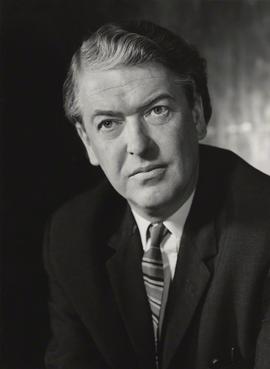
Sir Kingsley William Amis was an English novelist, poet, critic and teacher. He wrote more than 20 novels, six volumes of poetry, a memoir, short stories, radio and television scripts, and works of social and literary criticism. He is best known for satirical comedies such as Lucky Jim (1954), One Fat Englishman (1963), Ending Up (1974), Jake's Thing (1978) and The Old Devils (1986).

Michael John Harrison, known for publication purposes primarily as M. John Harrison, is an English author and literary critic. His work includes the Viriconium sequence of novels and short stories (1971–1984), Climbers (1989), and the Kefahuchi Tract trilogy, which consists of Light (2002), Nova Swing (2006) and Empty Space (2012).

Arthur Frederick Hailey, AE was a British-Canadian novelist whose plot-driven storylines were set against the backdrops of various industries. His books, which include such best sellers as Hotel (1965), Airport (1968), Wheels (1971), The Moneychangers (1975), and Overload (1979), have sold 170 million copies in 38 languages.
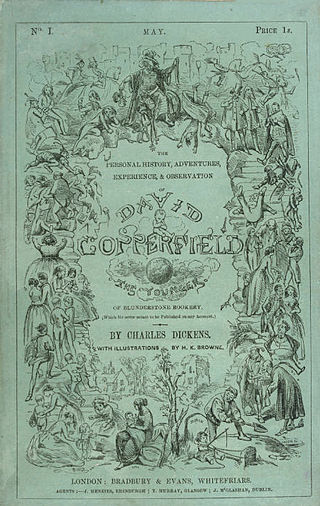
David Copperfield is a novel in the bildungsroman genre by Charles Dickens, narrated by the eponymous David Copperfield, detailing his adventures in his journey from infancy to maturity. It was published as a serial in 1849 and 1850 and then as a book in 1850.
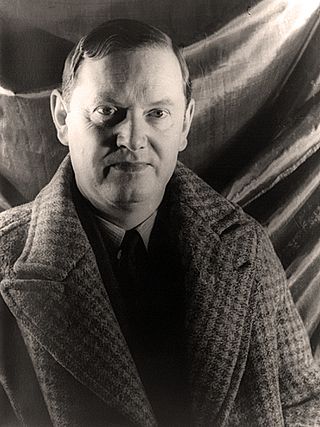
Arthur Evelyn St. John Waugh was an English writer of novels, biographies, and travel books; he was also a prolific journalist and book reviewer. His most famous works include the early satires Decline and Fall (1928) and A Handful of Dust (1934), the novel Brideshead Revisited (1945), and the Second World War trilogy Sword of Honour (1952–1961). He is recognised as one of the great prose stylists of the English language in the 20th century.

Henry Graham Greene was an English writer and journalist regarded by many as one of the leading novelists of the 20th century.

The History of Tom Jones, a Foundling, often known simply as Tom Jones, is a comic novel by English playwright and novelist Henry Fielding. It is a Bildungsroman and a picaresque novel. It was first published on 28 February 1749 in London and is among the earliest English works to be classified as a novel. It is the earliest novel mentioned by W. Somerset Maugham in his 1948 book Great Novelists and Their Novels among the ten best novels of the world.
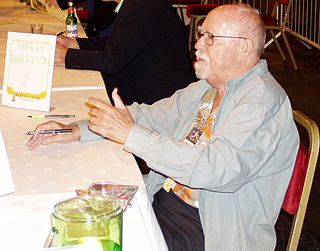
Harry Max Harrison was an American science fiction author, known mostly for his character The Stainless Steel Rat and for his novel Make Room! Make Room! (1966). The latter was the rough basis for the motion picture Soylent Green (1973). Long resident in both Ireland and the United Kingdom, Harrison was involved in the foundation of the Irish Science Fiction Association, and was, with Brian Aldiss, co-president of the Birmingham Science Fiction Group.
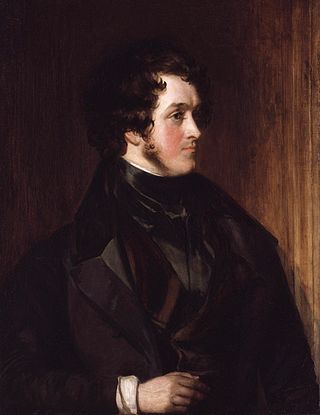
William Harrison Ainsworth was an English historical novelist born at King Street in Manchester. He trained as a lawyer, but the legal profession held no attraction for him. While completing his legal studies in London he met the publisher John Ebers, at that time manager of the King's Theatre, Haymarket. Ebers introduced Ainsworth to literary and dramatic circles, and to his daughter, who became Ainsworth's wife.

Brideshead Revisited: The Sacred & Profane Memories of Captain Charles Ryder is a novel by English writer Evelyn Waugh, first published in 1945. It follows, from the 1920s to the early 1940s, the life and romances of the protagonist Charles Ryder, most especially his friendship with the Flytes, a family of wealthy English Catholics who live in a palatial mansion called Brideshead Castle. Ryder has relationships with two of the Flytes: Sebastian and Julia. The novel explores themes including Catholicism and nostalgia for the age of English aristocracy. A faithful and well-received television adaptation of the novel was produced in an 11-part miniseries by Granada Television in 1981.
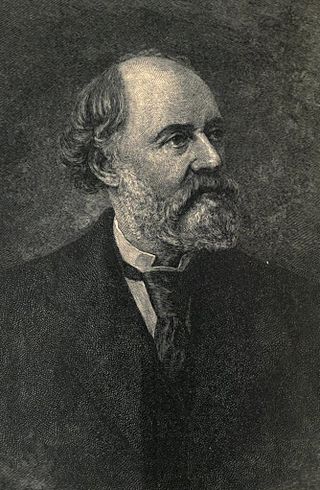
Charles Reade was a British novelist and dramatist, best known for The Cloister and the Hearth.

Richard Stanley Francis was a British steeplechase jockey and crime writer whose novels centre on horse racing in England.

John Gerard Braine was an English novelist. Braine is usually listed among the angry young men, a loosely defined group of English writers who emerged on the literary scene in the 1950s.

Henry Green was the pen name of Henry Vincent Yorke, an English writer best remembered for the novels Party Going, Living and Loving. He published a total of nine novels between 1926 and 1952.
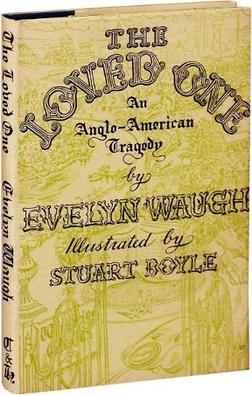
The Loved One: An Anglo-American Tragedy (1948) is a short satirical novel by British novelist Evelyn Waugh about the funeral business in Los Angeles, the British expatriate community in Hollywood, and the film industry.

Decline and Fall is a novel by the English author Evelyn Waugh, first published in 1928. It was Waugh's first published novel; an earlier attempt, titled The Temple at Thatch, was destroyed by Waugh while still in manuscript form. Decline and Fall is based, in part, on Waugh's schooldays at Lancing College, undergraduate years at Hertford College, Oxford, and his experience as a teacher at Arnold House in north Wales. It is a social satire that employs the author's characteristic black humour in lampooning various features of British society in the 1920s.
Martin Roger Seymour-Smith was a British poet, literary critic, and biographer.

The Ordeal of Gilbert Pinfold is a novel by the British writer Evelyn Waugh, first published in July 1957. It is Waugh's penultimate full-length work of fiction, which the author called his "mad book"—a largely autobiographical account of a period of hallucinations caused by bromide intoxication that he experienced in the early months of 1954, recounted through his protagonist Gilbert Pinfold.

Andrew Crumey is a novelist and former literary editor of the Edinburgh newspaper Scotland on Sunday. His works of literary fiction incorporate elements of speculative fiction, historical fiction, philosophical fiction and Menippean satire. Brian Stableford has called them "philosophical fantasies". The Spanish newspaper El Mundo called Crumey "one of the most interesting and original European authors of recent years."

The Temple at Thatch was an unpublished novel by the British author Evelyn Waugh, his first adult attempt at full-length fiction. He began writing it in 1924 at the end of his final year as an undergraduate at Hertford College, Oxford, and continued to work on it intermittently in the following 12 months. After his friend Harold Acton commented unfavourably on the draft in June 1925, Waugh burned the manuscript. In a fit of despondency from this and other personal disappointments he began a suicide attempt before experiencing what he termed "a sharp return to good sense".